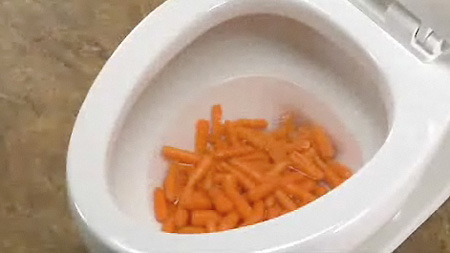Can One to Dispose of Food in the Toilet?
Can One to Dispose of Food in the Toilet?
Blog Article
We have come across this post relating to What Can Happen If You Flush Food Down the Toilet? down the page on the internet and thought it made good sense to relate it with you on this page.

Intro
Many people are commonly faced with the issue of what to do with food waste, particularly when it involves leftovers or scraps. One usual question that develops is whether it's alright to purge food down the commode. In this post, we'll look into the reasons individuals may take into consideration flushing food, the consequences of doing so, and different methods for correct disposal.
Reasons why people might take into consideration flushing food
Absence of understanding
Some people might not recognize the possible damage triggered by purging food down the bathroom. They may wrongly believe that it's a harmless technique.
Ease
Flushing food down the toilet may look like a fast and easy remedy to disposing of undesirable scraps, especially when there's no nearby trash can available.
Idleness
In some cases, individuals might merely pick to flush food out of sheer laziness, without considering the effects of their actions.
Effects of flushing food down the toilet
Ecological effect
Food waste that ends up in rivers can add to pollution and injury water communities. Furthermore, the water used to flush food can strain water sources.
Plumbing issues
Purging food can lead to stopped up pipelines and drains, causing pricey pipes fixings and aggravations.
Types of food that need to not be flushed
Coarse foods
Foods with coarse textures such as celery or corn husks can get tangled in pipelines and trigger obstructions.
Starchy foods
Starchy foods like pasta and rice can soak up water and swell, resulting in blockages in pipelines.
Oils and fats
Greasy foods like bacon or food preparation oils must never ever be flushed down the bathroom as they can strengthen and create clogs.
Correct disposal approaches for food waste
Making use of a garbage disposal
For homes outfitted with waste disposal unit, food scraps can be ground up and flushed through the pipes system. Nonetheless, not all foods are suitable for disposal in this way.
Recycling
Certain food product packaging materials can be reused, minimizing waste and minimizing environmental influence.
Composting
Composting is an environmentally friendly method to deal with food waste. Organic materials can be composted and made use of to improve soil for horticulture.
The value of appropriate waste management
Reducing ecological damage
Proper waste administration methods, such as composting and recycling, help reduce air pollution and protect natural resources for future generations.
Shielding plumbing systems
By preventing the technique of flushing food down the bathroom, house owners can avoid pricey plumbing fixings and maintain the honesty of their plumbing systems.
Verdict
To conclude, while it may be tempting to flush food down the bathroom for ease, it is essential to understand the potential consequences of this action. By taking on correct waste monitoring practices and getting rid of food waste sensibly, people can contribute to much healthier plumbing systems and a cleaner environment for all.
FLUSH FOOD DOWN THE TOILET?
FLUSHING FOOD CAN CAUSE BLOCKED DRAINS IN YOUR HOME
All of the plumbing fixtures in your home are connected to the same sewer pipe outside of your home. This outdoor sewer pipe is responsible for transporting all the wastewater from your home to the Council sewer mains. Even small pieces of food that go down the kitchen sink can cause problems for your sewer. It should therefore be obvious that flushing larger bits of food, such as meat, risks a clog in either the toilet itself or the sewer pipes. Flushing greasy food is even more problematic because oil coagulates when it cools, coating the interior lining of your pipes.
THE TOILET IS NOT A BIN
Food isn’t the only thing that people shouldn’t be flushing down the toilet. People use the toilet to dispose of all kinds of things such as tampons, makeup wipes, dental floss, kitty litter and even underwear. Water goes to great lengths to educate residents about the high costs and stress placed on wastewater treatment systems simply from people flushing the wrong stuff down the toilet. It costs taxpayers millions of dollars each year, and homeowners thousands in blocked drain repairs.
FLUSHING FOOD IS A WASTE OF WATER
Flushing food is a waste of our most precious resource - water. In June this year Level 1 water restrictions were introduced to protect water supply from drought conditions. Much of New South Wales continues to be affected by prolonged drought with recent figures revealing up to 97 per cent of the state remains in drought. Depending on whether you have a single or dual flush toilet, every single flush uses between five and 11 litres of water. In the current climate this is a huge amount of water to be wasting on flushing food that should be placed in the bin (or better yet, the compost).
https://www.jabplumbingsolutions.com.au/blog/can-you-flush-food-down-the-toilet

I have been very excited about What Can Happen If You Flush Food Down the Toilet? and I am praying you enjoyed reading our blog posting. Enjoyed reading our blog posting? Please share it. Let other people discover it. We take joy in reading our article about Think Twice Before Flushing Food Down Your Toilet.
Schedule Free Estimate Report this page